Follow The Daily Ticker on Facebook here!
Outside of the market madness, the biggest global news this week might be China sending its first aircraft carrier to sea.
The launch was not unexpected and China sought to downplay its significance, saying "it will not pose a threat to other countries."
Still, "it is the most potent symbol yet of China's desire to develop the power both to deny U.S. naval access to Asian waters and to protect its global economic interests, including shipping lanes," The WSJ reports.
Like many others, Stephen Glain, author of State vs. Defense, believes the U.S. and China are, indeed, on a collision course. "Absent a good faith attempt to negotiate this thicket of disputes between China and Taiwan and the Philippines and Brunei and others, I think it's inevitable," he says. "The Chinese are not going to back down."
Just as America adopted the Monroe Doctrine to project power in the Western Hemisphere, the Chinese believe they have a right to their own sphere of influence in the Asia-Pacific region. "China is after all a 3000-year old country; Asia has been throughout most of that history Sino-centric," he says.
But to those who believe the U.S. and its allies must "bottle up" China, Glain says "there's nothing in those 3000 years of Chinese history" to suggest China's intentions are to militarily dominate the region. "On the contrary, they've always remained close to their own territory," he notes. "They have always been the Middle Kingdom between heaven and earth."
However, Glain fears the U.S. and its allies might provoke China into a war that might otherwise be avoidable. "Arms races tend to develop their own immutable momentum," he says, noting the Pentagon is embarking on an "enormous military buildup" in the region.
In his new book, Glain laments the rise of the "military industrial complex" President Eisenhower warned about 50 years ago, suggesting defense contractors and their patrons in Congress and the Pentagon have an undue influence on U.S. foreign policy. American hubris is also playing a role in the march to war, he says.
Outside of the market madness, the biggest global news this week might be China sending its first aircraft carrier to sea.
The launch was not unexpected and China sought to downplay its significance, saying "it will not pose a threat to other countries."
Still, "it is the most potent symbol yet of China's desire to develop the power both to deny U.S. naval access to Asian waters and to protect its global economic interests, including shipping lanes," The WSJ reports.
Like many others, Stephen Glain, author of State vs. Defense, believes the U.S. and China are, indeed, on a collision course. "Absent a good faith attempt to negotiate this thicket of disputes between China and Taiwan and the Philippines and Brunei and others, I think it's inevitable," he says. "The Chinese are not going to back down."
Just as America adopted the Monroe Doctrine to project power in the Western Hemisphere, the Chinese believe they have a right to their own sphere of influence in the Asia-Pacific region. "China is after all a 3000-year old country; Asia has been throughout most of that history Sino-centric," he says.
But to those who believe the U.S. and its allies must "bottle up" China, Glain says "there's nothing in those 3000 years of Chinese history" to suggest China's intentions are to militarily dominate the region. "On the contrary, they've always remained close to their own territory," he notes. "They have always been the Middle Kingdom between heaven and earth."
However, Glain fears the U.S. and its allies might provoke China into a war that might otherwise be avoidable. "Arms races tend to develop their own immutable momentum," he says, noting the Pentagon is embarking on an "enormous military buildup" in the region.
In his new book, Glain laments the rise of the "military industrial complex" President Eisenhower warned about 50 years ago, suggesting defense contractors and their patrons in Congress and the Pentagon have an undue influence on U.S. foreign policy. American hubris is also playing a role in the march to war, he says.
"Without an admission by the U.S. of its limitations, both fiscal and militarily…I think some kind of conflict between the U.S. and China is inevitable, probably in our lifetime," he says.
A news website run by China's defence ministry said Thursday the nation's aircraft carrier should handle territorial disputes, despite government assurances the vessel posed no threat to its neighbours.
The comments came a day after the 300-metre (990-foot) vessel embarked on its maiden sea trial, prompting a worried United States to demand China explain why it needs an aircraft carrier, amid concerns over Beijing's military aims.
China has repeatedly insisted the carrier -- an old Soviet ship that is being refitted in the northeast of the country -- will be used mainly for training and research, and does not change Beijing's defensive military policy.
But in a comment piece published on jz.chinamil.com.cn, Guo Jianyue, a senior reporter at the top state-run military newspaper PLA Daily, said the carrier should be brought out for disputes. The website is an offshoot of the main PLA Daily site.
"Why did we build it if we don't have the courage and willingness to use the aircraft carrier to handle territorial disputes?" he asked in the article.
"It is reasonable to use the aircraft carrier or other warships to handle disputes if there is any need.
"The reason why we built a carrier is to safeguard China's maritime rights and interests more efficiently. We will be more confident and have more determination to defend our territorial integrity after we have carriers."
China's state-run newspapers and websites are carefully edited, which indicates the comment piece received approval at a higher level, although it may not necessarily reflect the general consensus.
On Wednesday, US State Department spokeswoman Victoria Nuland said Washington "would welcome any kind of explanation that China would like to give for this kind of equipment."
"This is part of our larger concern that China is not as transparent as other countries. It's not as transparent as the United States about its military acquisitions, about its military budget," she said.
Other countries have in the past also voiced similar concerns, as China's military expands and the Asian nation grows more assertive about its territorial claims, notably in the East China Sea and South China Sea.
China's People's Liberation Army -- the largest armed force in the world -- is extremely secretive about its defence programmes, which benefit from a huge and expanding military budget boosted by the nation's runaway economic growth.
Tàu sân bay được xem là một trong những loại tàu chiến hiện đại nhất của nhân loại, bắt đầu nổi lên từ thế chiến thứ nhất và có khả năng thay đổi cục diện chiến tranh trong thế chiến thứ 2.
Hiện tại có 9 quốc gia đang có tàu sân bay trên biển, trong đó Mỹ là nước sở hữu lớn nhất với số lượng lên đến 11 chiếc.
Dự kiến Trung Quốc sẽ trở thành thành viên thứ 10 của câu lạc bộ này khi tàu sân bay Varyag chính thức đưa vào phục vụ.
1. Mỹ
Tất cả 11 tàu sân bay của Mỹ đều hoạt động bằng năng lượng hạt nhân và có thể chở theo 90.000 tấn. USS Enterprise của Mỹ là tàu sân bay nguyên tử đầu tiên trên thế giới. 10 tàu sân bay còn lại là thuộc lớp Nimitz.
 |
| Tàu sân bay USS Enterprise CVN-65 của Mỹ |
Hiện tàu sân bay USS George Washington đang hướng tới vùng biển Yokosuka của Nhật Bản, gần với lãnh hải của Trung Quốc.
2. Vương quốc Anh
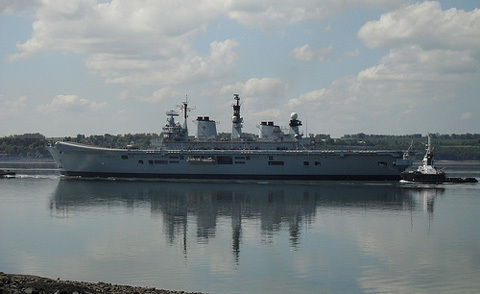 |
| Tàu sân bay HMS Illustrious của Anh |
Hiện Anh có duy nhất một chiếc tàu sân bay đang hoạt động mang tên HMS Illustrious, tải trọng 22.000 tấn. Tàu cho phép các máy bay STOVL hoạt động cất cánh đường băng ngắn và hạ cánh thẳng đứng.
3. Pháp
 |
| Tàu Charles de Gaulle của Pháp |
Hải quân Pháp có một tàu sân bay chạy bằng năng lượng hạt nhân, được đặt theo tên một cố tổng thống của nước này là Charles de Gaulle.
4. Italy
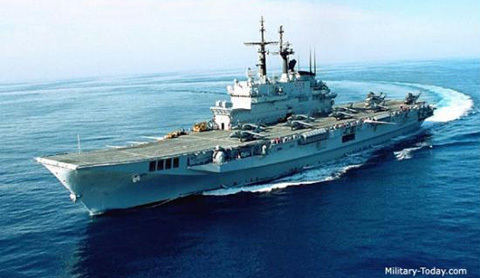 |
| Tàu sân bay Gavour |
Italy có 2 hàng không mẫu hạm đang hoạt động là tàu Gavour, trọng tải 27.000 tấn và tàu Giuseppe Garibaldi trọng tải 14.000 tấn. Cả hai tàu đều được thiết kế để phóng máy bay STOVL.
5. Tây Ban Nha
 |
| Tàu Principe de Asturias của Tây Ban Nha |
Nước này hiện có 2 tàu sân bay là Principe de Asturias trọng tải 17.000 tấn và tài Juan Carlos I trọng tải 27.000 tấn. Tuy nhiên hải quân Tây Ban Nha cho rằng họ chỉ sử dụng duy nhất tàu Princepe de Asturias còn tàu Juan Carlos I được xem như chiếc tàu tấn công đổ bộ.
6. Nga
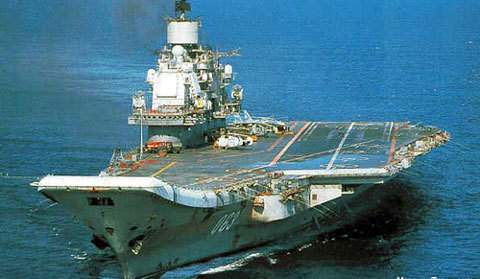 |
| Đô đốc Kuznetsov của Nga |
Nga được thừa hưởng gần như toàn bộ di sản quân sự từ thời Liên Xô, lực lượng hải quân Nga đang sử dụng duy nhất một chiếc tàu sân bay có tên Đô đốc Kuznetsov, trọng tải 67.000 tấn.
Tàu sân bay Varyag trước đây thuộc sở hữu của Liên Xô, sau đó được Trung Quốc mua lại để sửa chữa.
7. Ấn Độ
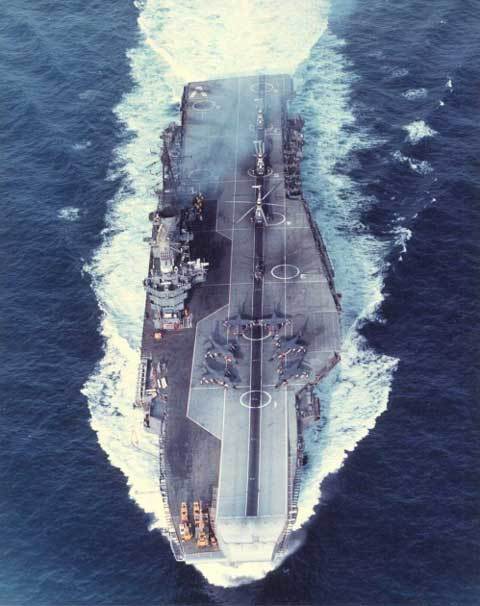 |
| Tàu sân bay INS Viraat của Ấn Độ |
Tàu sân bay duy nhất của Ấn Độ là INS Viraat (tên cũ là HMS Hermes), được mua lại từ nước Anh sau đó tân trang lại.
8. Thái Lan
 |
| : HTMS Chakri Naruebet là tàu sân bay duy nhất của Hải quân Hoàng gia Thái Lan |
Thái Lan là quốc gia đầu tiên ở Đông Nam Á sở hữu tàu sân bay. Chiếc tàu sân bay duy nhất của Hải quân Hoàng gia Thái Lan là HTMS Chakri Naruebet do một công ty đóng tàu của Tây Ban Nha xây dựng. Tàu được đặt tên theo tên của Hoàng gia Thái Lan, cho phép phóng các máy bay STOVL.
9. Brazil
 |
| Tàu sân bay Sao Paulo của Brazil |


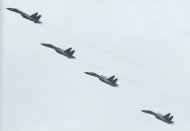
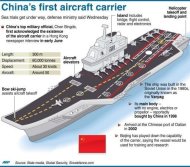
No comments:
Post a Comment